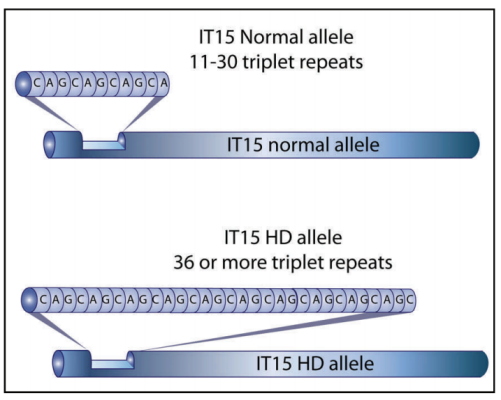1. Huntington’s Disease is caused by a gene mutation of the IT15 gene on chromosome 4. The pattern of inheritance is autosomal dominant.
Compare and contrast autosomal dominant, autosomal recessive, sex-linked dominant, and sex-linked recessive inheritance patterns and discuss the relationship between inheritance patterns of a disease and the likelihood of offspring being affected by the disease.
2. The IT15 gene shows variation in the number of CAG repeats between individuals. In a normal allele there are between 10 and 35 CAG repeats, whereas in the mutant allele there can be 36 or more CAG repeats.
Using your understanding of gene expression and protein structure, explain the impact of additional CAG repeats on the structure of the Huntingtin protein.
3. Evidence from research shows that there is both genotypic and phenotypic variation present in Huntington’s disease. Some aspects of this variability can be explained while other aspects are not well understood.
a. Using information presented in the resources, discuss aspects of the phenotypic variability seen in HD that can be explained to some extent by research evidence.
b. Scientists at the University of Auckland are currently exploring the possibility that HD may involve alterations to epigenetic processes. Explain what the epigenome is and discuss potential effects of alterations in epigenetic processes on structure and function within an organism.
4. Scientists have identified that the human brain has adult stem cells and that when affected by HD, the human brain tries to repair itself by making replacement brain cells (a process called neurogenesis). While the potential to replace diseased brain cells using stem cells is exciting, the research is still in the phase of development and understanding whether this is potentially viable or not will take many years.
Compare and contrast the potential of embryonic and adult stem cells as future treatment options for neurological disease, examining both biological and ethical issues associated with this potential.





